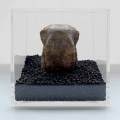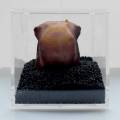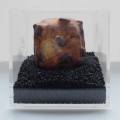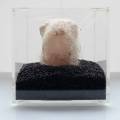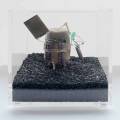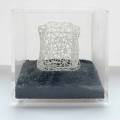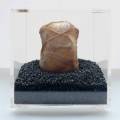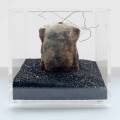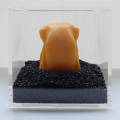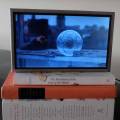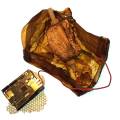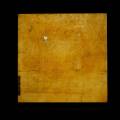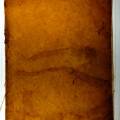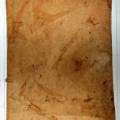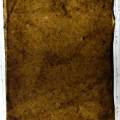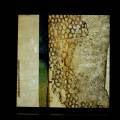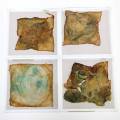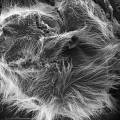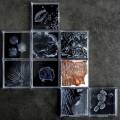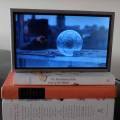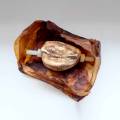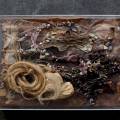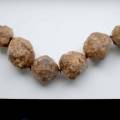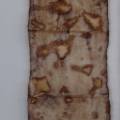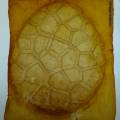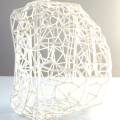This is an old revision of the document!
Table of Contents
Cabinet #004: FUTURE ARCHAEOLOGY
or The Temporal Duration Through Which The Future Is Founded In The Present
a sculptural bio-art installation
25/3 - 08/06/2019 SongEun Art Space, Seoul
Concept
The bio-art installation ‘Cabinet #004: Future Archaeology (The Temporal Duration Through Which The Future Is Founded In The Present) shows a collection of rarities. Every artifact is the outcome of a particular experiment. The objects are presented on large laboratory tables with a translucent top. The bizarre biomorphic artefacts add a specific rhythm to the installation, but they stand in stark contrast to the strict geometry of the laboratory architecture: hard and soft oppose each other. The installation is completed by a multi-layered hanging artwork grown by bacteria, and two large-scale lightboxes with B/W micrographs. The room is bathing in pink light.
Bioart projects blur boundaries between art and modern biology with an emphasis on philosophical, societal, and environmental issues. As a contemporary art form, bioart adapts scientific methods and biotechnology to explore living systems as artistic subjects. Bioart plays an important role in critically challenging emerging life science applications, stimulating of scientific thinking, and contributing to new research questions and new technologies.
What is at the core of this sculptural bio-installation?
How to present this problem/possible solution in an artistic installation?
What is the difference between bio art, DIY-bio and bio-design - and is this important?
What is the specificity of bioart in relation to biotechnology?
What ethical issues do bioartworks raise and address?
How are these practices performed and perceived?
What possibilities and challenges do they carry?
DIYbio consists of a diverse network of actors who use biotechnological methods for amateur and hacking purposes (and includes many bioartists)
The Story: Plastic waste is filling our land and oceans. We urgently have to think about alternatives for this all-over-the-place material. Alternatives that are made from organic components and that are bio-degradable over shorter periods of time.
Possibilities are new and organic polymer materials (polysaccharides) made by bacteria, spiders or from algae. Besides being an alternative for plastics in daily use (bags, containers, …) these new materials can also become alternative energy sources (biofuels, algae, microbial fuel cells), been used in construction, in textile business, …
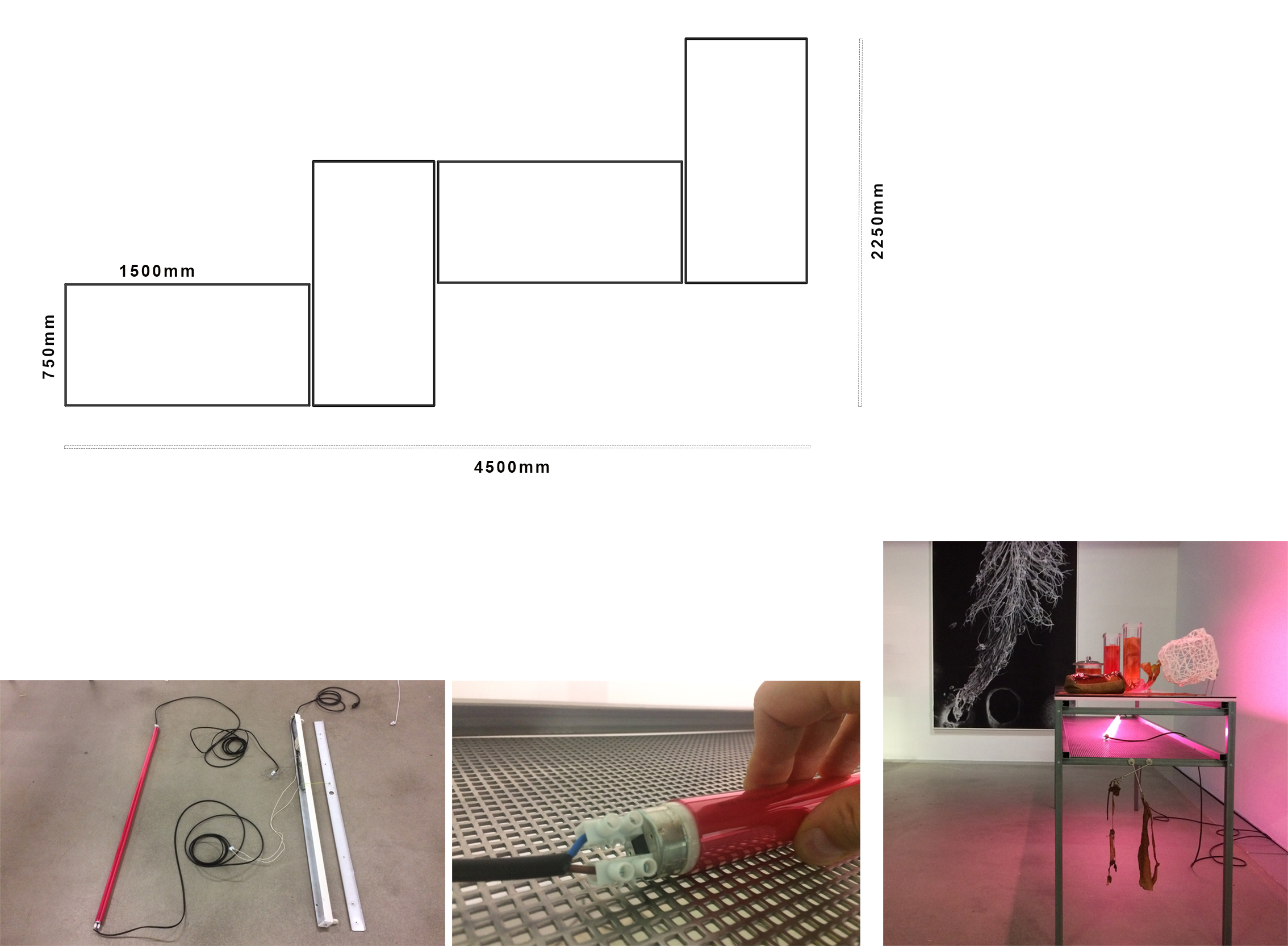
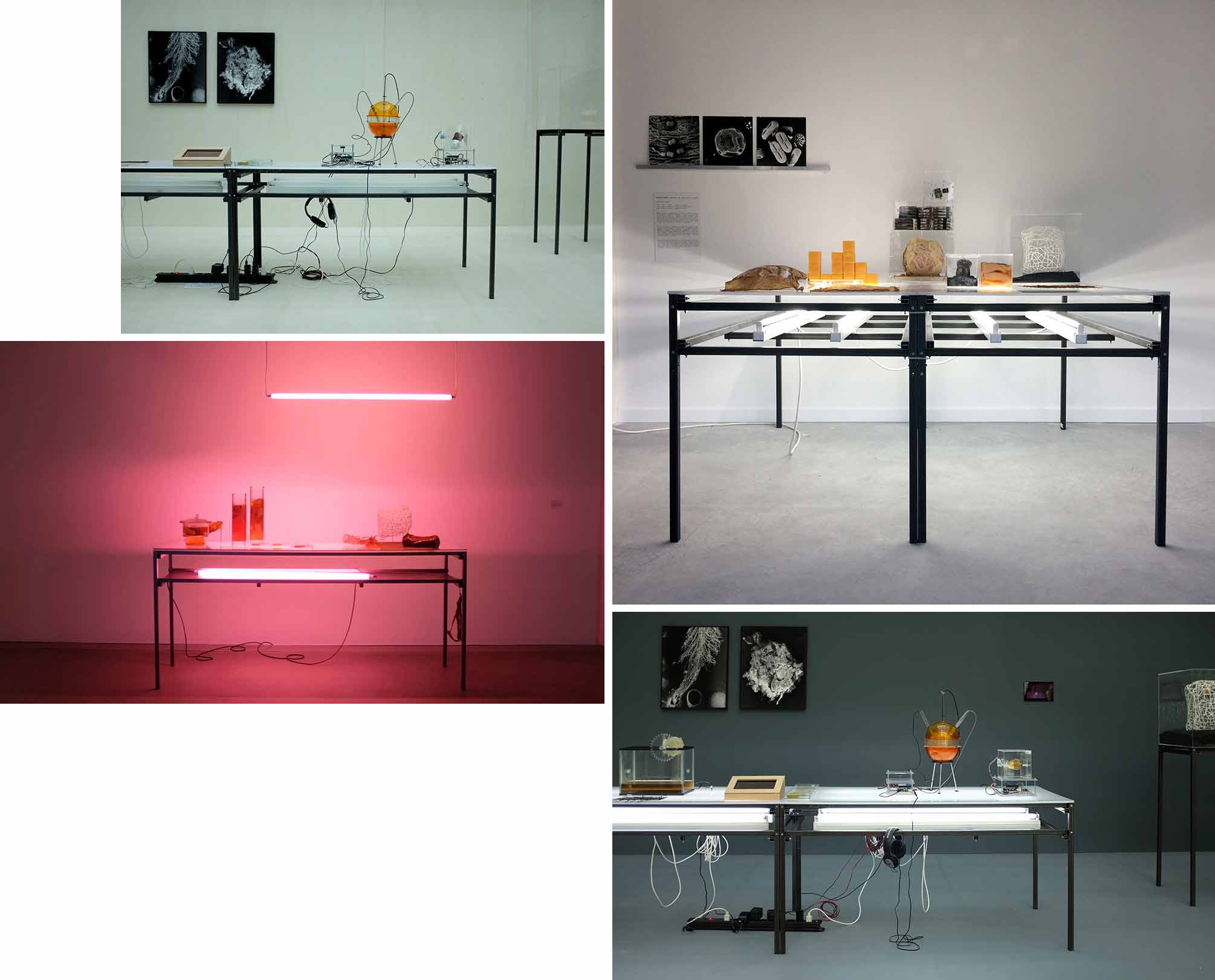
Installation of the 4 tables needs specific light.
Above every table 1 TL-light as seen on pink photo
Under every table: 2 TL-lights as seen on photo
- Rosco filter (pink)
The pink color is a reference to the infrared camera’s + infrared lights that are used in laboratories to monitor and film living organisms.
Altered Intersections (collection of rarities on the tables)
table 1:
Series of 9 small sculptures, developed during the research of the IntelligentGuerrilla Beehive project.
The objects are presented in clear plexi boxes, each 13cm x 13cm x 13cm, on black sand. The boxes are arranged in a square upon the table.
Materials: wax, latex, epoxy, (dead) bacteria, organic dyes, electronics, solarpanel, 3D printed PLA, seeds, aquarium sand
table 2:
Table 2 is composed of different clusters.
There is the 'Hanging Piece' (6 microbial skins of 33cm x 48cm each, hanging from the ceiling in a row of 6, their lowest side ± 60cm above the tabletop). Arranged below the tabletop is the 'Belly with small IGB', an microbial skin dried in the form of a beehive-belly. In the open belly sits a plaster cast of a small IGB. Next to the empty belly, we see a blank metal box of 22cm x 16cm x 6cm. This is a videoplayer on which the video 'ALCHIMIA NOVA' runs in a loop.
At the end of the table we find the Algae Generator: a composition of a customized laboratorium stand with a vessel in green Murano glass in which Algae are cultivated with the help of an air-pump. Next to the Algae Generator stands a square vessel in which bacteria and yeast cells are growing a microbial skin, on top we see a lightbox of the same size displaying a dried microbial skin.
table 3:
Cut out SEM Micrograph + bacterial skins. 1 Scanning Electron Micrograph 'BeeHead/Caput',
table 4:
Glossa, Stimuli & Untitled Test Piece (wall)
Nature produces morphologies down to the smallest detail. Collecting, analyzing and combining the details and richness of shapes help us to understand life and existence. The Scanning Electron Microscope (SEM) microscope recreates this reality, that is otherwise not visible to the naked eye. Making pictures with the SEM is a camera-less process. The way the pictures look depends on the interaction between various methods of sample preparation and how the microscope is used. An electron beam makes a precise scan of the object’s surface and the resulting image is experienced as a 3D image. In order to produce such a clear and high quality image, specimens are coated with a fine layer of gold. This increases the sample’s electrical conductivity and the ability to reflect electrons. The brightness of the object’s surface provokes the 3D effect: the bright structures are protruding and the dark parts of the object sink deeper away.
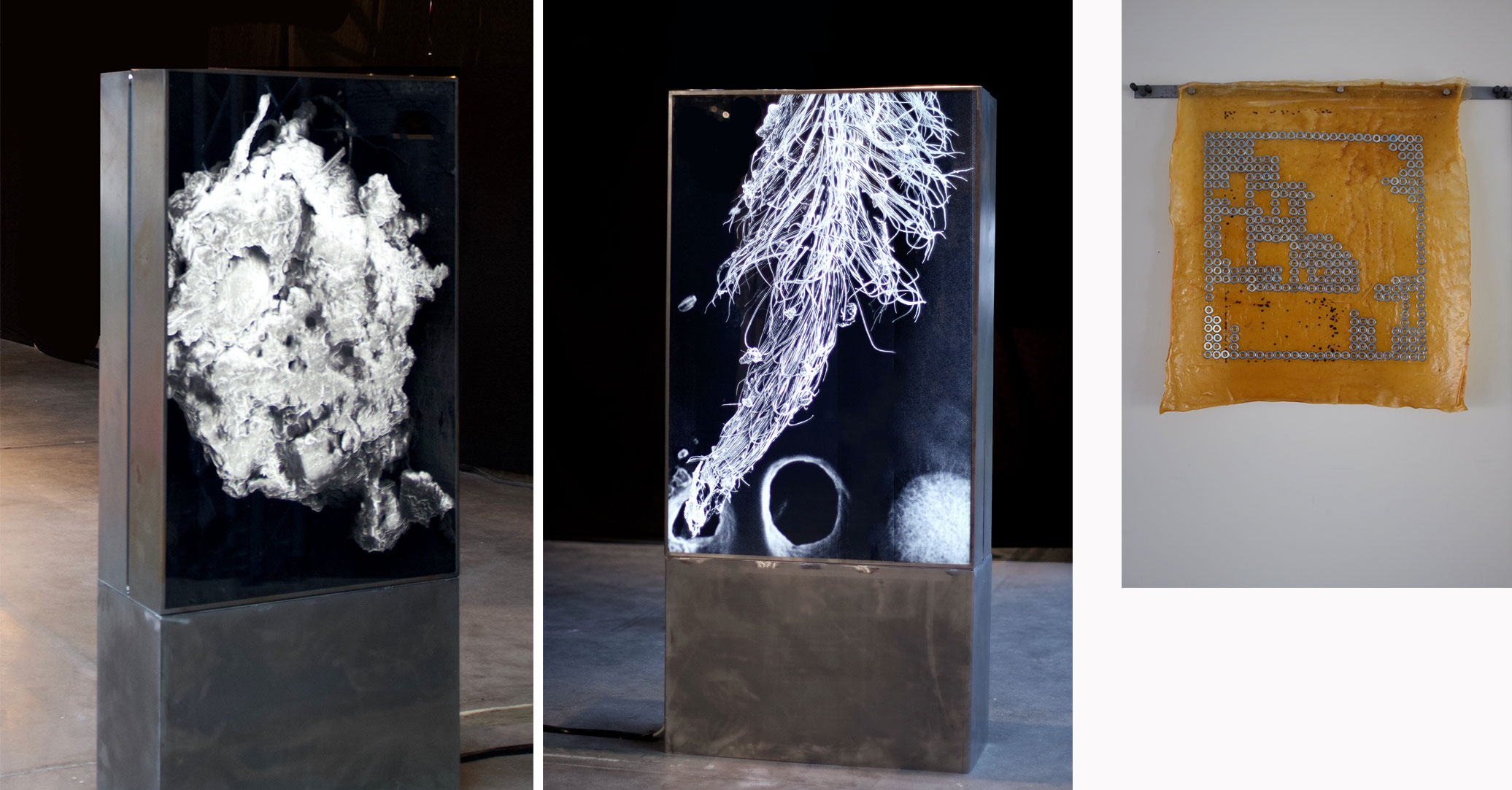
Glossi, Stimuli & Untiteld Test Piece (tribute to Eva Hesse)
Series of test pieces with bioplastics in different constallations: multiple layers, a range of organic pigments and testing combinations with different non-organic materials as well introduction and development of bacteria on the bioplastic matrix.
references
The theoreticians most referred to in the context of bioart: Foucault, Deleuze and Guattari, Simondon, Whitehead, and Benjamin (theories of new materialism).
What are its political, social, and even philosophical implications? What does this mean for average citizens and their future? How are “bioart” and biohacking practices affecting (will affect) the whole of society? http://www.diysect.com/about/
Artists are uncomfortable with focus on the function (art can give nonspecialists an increased understanding of biotechnosciences) of their art. There is a strong sense that art needs to convey something more than instrumentalist aims.
Nora S. Vaage - Amplifying Ambiguities
https://www.cell.com/trends/biotechnology/fulltext/S0167-7799(15)00205-X
Scanning Electron Microscope: Transmigration of Scientific Photography into the domain of Art
Tackle one of the biggest ecological problems of our times: the presence of 'plastic' (as an ubiquitous and non-biodegradable material).
chitosan & bioplastics
bioplastics research
crabs, bees and bioplastics

